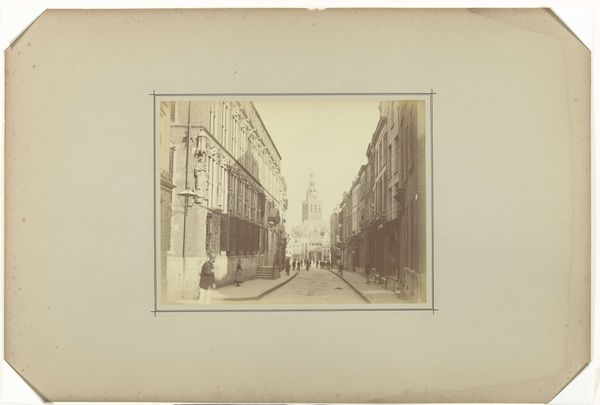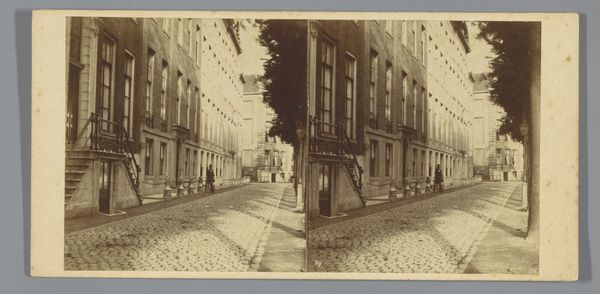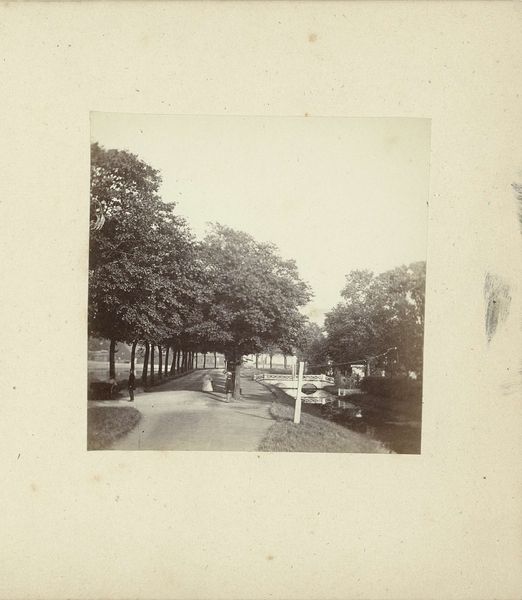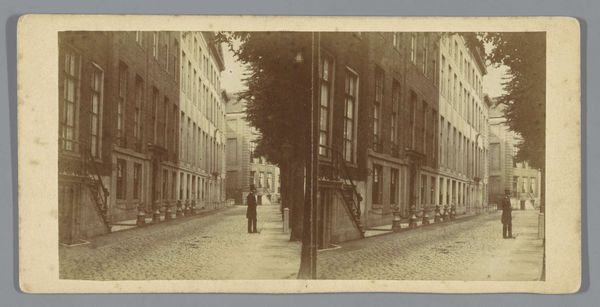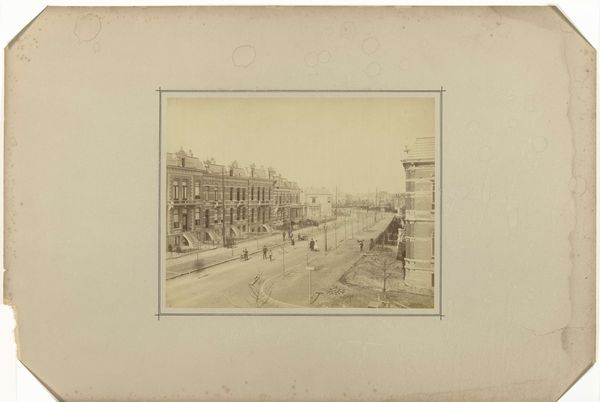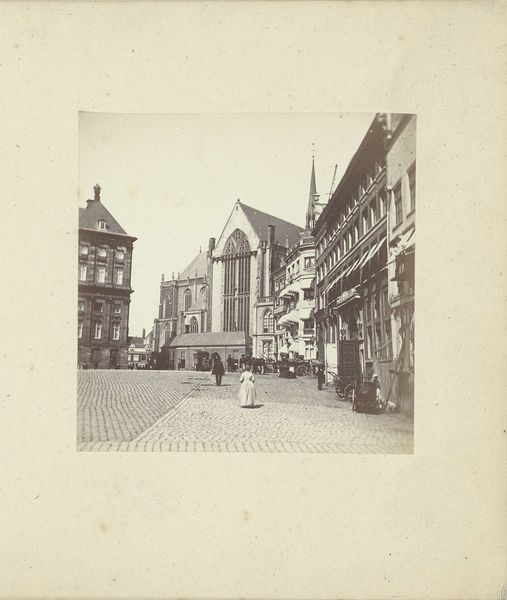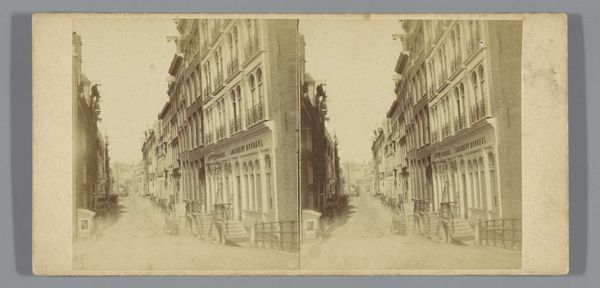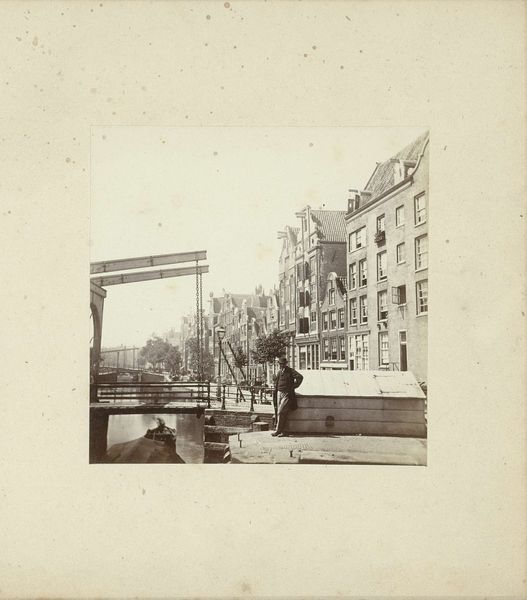
photography, gelatin-silver-print
#
dutch-golden-age
#
photography
#
gelatin-silver-print
#
cityscape
#
realism
Dimensions: height 82 mm, width 82 mm, height 145 mm, width 234 mm
Copyright: Rijks Museum: Open Domain
Editor: This photograph, “Gezicht op de Leidsegracht in Amsterdam,” was taken sometime between 1860 and 1875. It’s a gelatin-silver print, and depicts a canal scene in Amsterdam. I’m immediately struck by how serene and still it feels, even though it captures a public space. What do you see in this image, and how does it reflect its time? Curator: It’s a beautiful example of early urban photography. Looking at it through a historical lens, what stands out is the depiction of Amsterdam as a developing modern city, yet still deeply rooted in its Golden Age past. The image presents the canal not just as a waterway, but as a vital artery of city life. Note the figures—the very faint outlines of the figures, made faint by long exposure times—seem deliberately arranged, hinting at a constructed public image. Do you think that impacts how we read this photograph now? Editor: Definitely. It makes me wonder about the photographer's intentions. Was it purely documentary, or were they trying to create a certain narrative about Amsterdam? Was there a public interest being served or promoted here? Curator: Precisely! The choice of perspective, the inclusion of certain elements—these are not neutral acts. Think about who commissioned or supported such images. Photography at this time played a critical role in shaping perceptions of urban progress. Notice also how different levels of clarity serve different parts of the composition, which indicates that a hierarchy may have been imposed upon its intended viewer. Do you have any thoughts about how our engagement might change if we were actually viewing it at that time? Editor: I suppose then people would view this photography very differently. Today, the same photo would prompt many different viewpoints and opinions. Curator: Exactly! How a photo serves to express diverse perspectives of the people in the same society remains an interesting research topic, as diverse forms of art and new media proliferate. Editor: This makes me think about the role of photography in shaping civic identity and social memory, then and now. It has been great to learn more about its function and effects through social history. Curator: Indeed, art encourages that constant investigation and consideration!
Comments
No comments
Be the first to comment and join the conversation on the ultimate creative platform.





